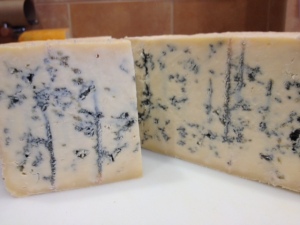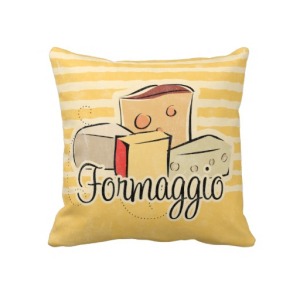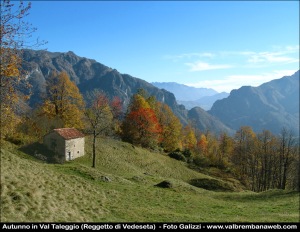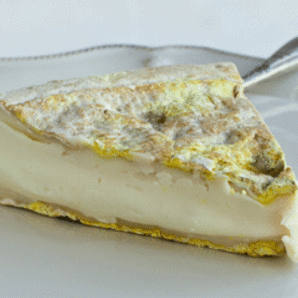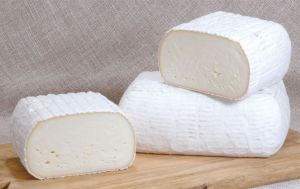Long Time No Cheese
Writing my first blog post in a really long time feels a little bit like showing up to a party empty-handed. I’m excited, and certainly happy to be here, but also feeling a bit sheepish. And, as when I show up to a party without anything to offer, I know that guests aren’t interested in excuses. What do you really want? Cheese. So, I won’t bother with justifications or explanations. Instead, I’ll get to the good stuff: A long & detailed history of what I’ve been up to since last I wrote. Ha! Kidding.
But, briefly: About one year ago, I left my job at Cowgirl Creamery’s Ferry Building shop. In my time there I learned so much about cheese, how best to serve and care for it, made a handful of incredibly inspiring friends, and grew my passion for education and customer service. If I could live in San Francisco on that wage (and maybe get a Saturday off every now and again), I might still be there. But, in May of 2014, it was time to move on. I jumped to the wholesale & distribution side of things, briefly working for a small company that imports and sells Italian and other European delicacies before settling in comfortably at GreenLeaf, a powerhouse in the world of Bay Area Food Distribution. Best known for our amazing produce, GreenLeaf recognizes the innovation and excitement happening in the world of cheese, and hired me to join a team of smart and enthusiastic curd nerds to grow the line and the program. These days, I spend my time helping to source and sell high quality cheeses from all kinds of producers, sharing my knowledge and recommendations with chefs, caterers, and really anyone who will listen. It is challenging and enlightening and rewarding and it keeps me very busy!
So busy, in fact, that I have little time for actual cheese eating. Sure, I do tastings with customers for work and quite regularly I’ll get to sample something we’re thinking of bringing in to sell, but it’s been a long time since I sat down to eat cheese like the consumer I am at heart. Or, it had been a long time, until last night.
Mission Cheese, my favorite neighbor, is celebrating their 4th Birthday this week with a string of events and offers that are hard to resist. Tomorrow there will be goats! Last night they had $4 beers, which was enough to get The Noodle off the couch and out into the daunting world of a Valencia Friday Night. Me? I was looking for cheese, and specifically some that I’d never had before. I found three. These are their stories.
(DUN DUN)
Aged Chelsea – Pasteurized Goat’s Milk, Zingerman’s Creamery, Michigan
This cheese could, quite literally, be the icing on a cake. Inspired by the classic cheeses of France’s Loire River Valley, the straight-up geniuses at Zingerman’s Creamery created Aged Chelsea, a bloomy-rinded goat log coated in edible vegetable ash. Oh, ash-ripening, you are one of my favorite things! This centuries-old tradition comes with a number of benefits. Want to keep the surface of your aging cheese free from microbes and mold spores? Add some ash! Worried your lactic beauty will become overly acidic? Add some ash! (When it comes to cheese, it’s not always bad to be basic). Ash-ripening also brings a lot to the table, aesthetically-speaking. Usually utilized with a bright white goat cheese, the stark contrast between rind and paste is strikingly lovely, and Aged Chelsea is no exception. The round discs presented on our cheese board looked like fat, snowy coins, and the taste was money also. This cheese is light and luscious, letting the subtle flavor of the goat’s milk do all the talking. It’s tangy, bright, and yeasty, calling out for a sweet supplement. I like to play with my food, so I crushed up a few dried cranberries and smushed them right in there. Just as I suspected, it was a perfect pairing.
Battenkill Brebis – Raw Sheep’s Milk, 3 Corner Field Farm, New York
Mike thinks that all sheep’s milk cheese “tastes like an eraser” and, for this reason, I force him to try new ones whenever they present themselves. I wish I could say that this one changed his mind (honestly, I wish I could say anything had changed his mind), but what I can say is that I happily ate both of our portions. While I had not previously heard of 3 Corner Field Farm, I now know that it is a sheep dairy and farmstead creamery in the Battenkill Valley of New York (which is basically New Hampshire). Former Manhattanites Karen Weinberg and Paul Borghard bought the farm in 1990, and they’ve been doing some serious sheep work since then. Their East Friesian tenants are grazed on fresh pasture every 24 hours, exposing the sheep (and, hence, the milk) to a wide variety of forage like clover, trefoil, and wild oregano. These flavors are then reflected in the finished product, especially considering that the cheese is made from raw milk. Battenkill Brebis is a tomme-style aged cheese with stunning complexity. The milk’s savory vegetal flavors are paired with a damp stone quality imparted by 4 to 6 months of cave-aging. Despite what others may think, this delight will not soon be erased from my memory.
Vermilion River Blue – Raw Cow’s Milk, Ludwig Farmstead Creamery, Illinois
Remember when I said that I sat down to eat cheese “like the consumer I am at heart”? Well, you can take the girl out from behind the cheese counter, but you can’t take the ‘monger out of the girl. One taste of Vermilion Blue, and I was overcome by the urge to just sell the hell out of it. Memorable name? Check. Semi-soft kid-friendly texture? Check. Little-to-no evident blue veining and a flavor mild enough to trick unsuspecting blue-phobics? Check and check! Damn, I want to throw on that apron and sling this stuff all day. The cheesemakers at Ludwig Farmstead Creamery have a money-maker on their hands with this raw Holstein cow’s milk “triple creme” but…do I like it? That is, quite honestly, hard to say. At the risk of sounding like a total jerk, the qualities that make this cheese so easy to sell are the same qualities that give me pause. Shouldn’t a self-described triple creme actually be creamy? Shouldn’t a raw milk blue be absolutely bursting with flavor? I didn’t get any of that with this cheese, but I did get to try a new (to me) crowd-pleaser. And, for the record, Mikey liked it.












